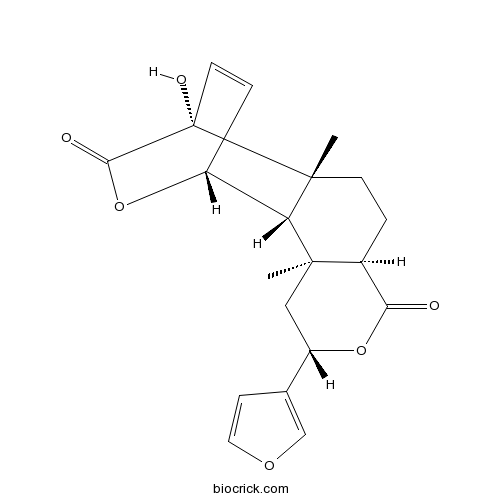Fibraurea recisa
Fibraurea recisa
1. The products in our compound library are selected from thousands of unique natural products; 2. It has the characteristics of diverse structure, diverse sources and wide coverage of activities; 3. Provide information on the activity of products from major journals, patents and research reports around the world, providing theoretical direction and research basis for further research and screening; 4. Free combination according to the type, source, target and disease of natural product; 5. The compound powder is placed in a covered tube and then discharged into a 10 x 10 cryostat; 6. Transport in ice pack or dry ice pack. Please store it at -20 °C as soon as possible after receiving the product, and use it as soon as possible after opening.
Natural products/compounds from Fibraurea recisa
- Cat.No. Product Name CAS Number COA
-
BCN5285
Palmatine3486-67-7
Instructions

-
BCN2622
Columbin546-97-4
Instructions

Electrochemical behavior of palmatine and its sensitive determination based on an electrochemically reduced L-methionine functionalized graphene oxide modified electrode.[Pubmed: 26517817]
A new and sensitive voltammetric sensor for palmatine, based on an electrochemically reduced L-methionine functionalized graphene oxide modified glassy carbon electrode (L-Met-ERGO/GCE), is reported. The electrochemical characteristics of palmatine at the proposed sensor were studied systematically and some dynamic parameters were calculated for the first time. A reasonable reaction mechanism for palmatine on the L-Met-ERGO/GCE electrode was proposed and discussed, and this could be a reference for the pharmacological action of palmatine in clinical study. Under optimized conditions, the peak current had a linear relationship with palmatine concentration in the range of 1 × 10(-7) to 5 × 10(-5) mol L(-1) with a detection limit of 6 × 10(-8) mol L(-1). Additionally, the proposed method was also used to detect palmatine in human urine samples, medicinal tablets and the Chinese herb Fibraurea recisa Pierre with satisfactory results.
Potent Activities of Roemerine against Candida albicans and the Underlying Mechanisms.[Pubmed: 26426004]
Roemerine (RM) is an aporphine alkaloid isolated from the fresh rattan stem of Fibraurea recisa, and it has been demonstrated to have certain antifungal activity. This study aimed to investigate the antifungal activity of RM and the underlying mechanisms in Candida albicans (C. albicans). The in vitro antifungal activity of RM was evaluated by a series of experiments, including the XTT reduction assay, confocal laser scanning microscopy assay, scanning electron microscope assay. Results showed that 1 μg/mL RM inhibited biofilm formation significantly (p < 0.01) both in Spider medium and Lee's medium. In addition, RM could inhibit yeast-to-hyphae transition of C. albicans in a dose-dependent manner. The biofilm-specific and hypha-specific genes such as YWP1, SAP5, SAP6, HWP1, ECE1 were up-regulated and EFG1 was down-regulated after 8 μg/mL RM treatment. Furthermore, the toxicity of RM was investigated using C. elegans worms, three cancer cells and one normal cell. The date showed that RM had no significant toxicity. In conclusion, RM could inhibited the formation of C. albicans biofilm in vitro, but it had no fungicidal effect on planktonic C. albicans cells, and the anti-biofilm mechanism may be related to the cAMP pathway.
Fibrarecisin, a novel triterpenoid from Fibraurea recisa with antitumor activity.[Pubmed: 17479424]
Fibrarecisin (1), a novel triterpenoid, was isolated from chloroform extract of the stem bark of Fibraurea recisa Pierre. Its structure was elucidated by spectroscopic methods. Compound 1 exhibited significant antitumor activity in vitro against A-549 cancer cell at 10 microM by SRB and MTT methods.


